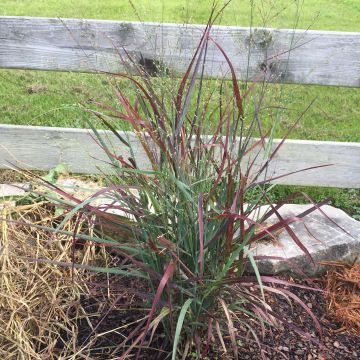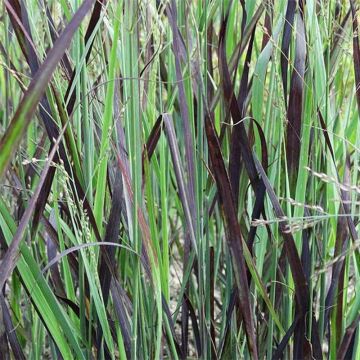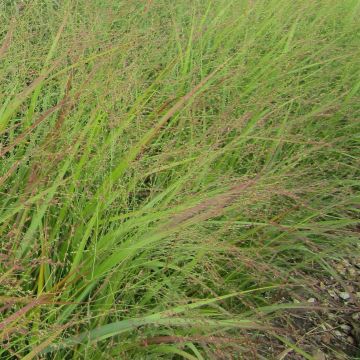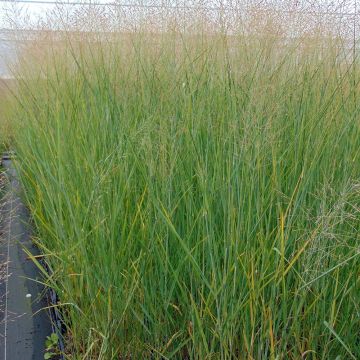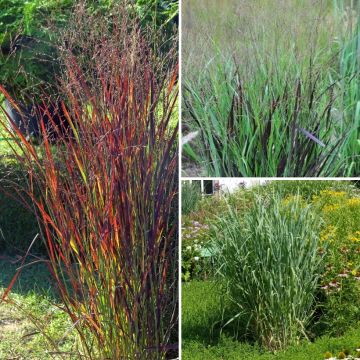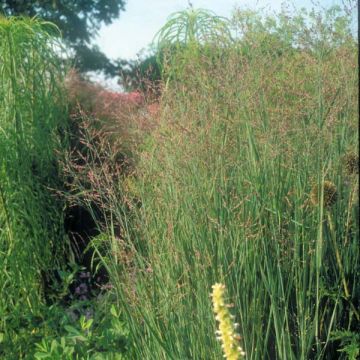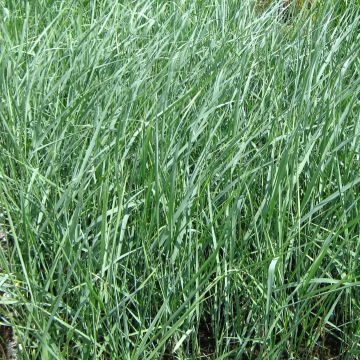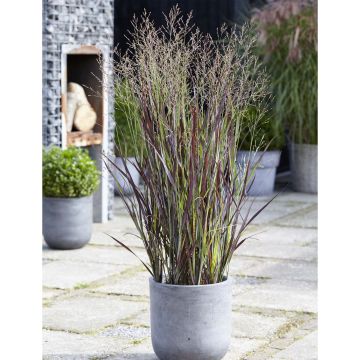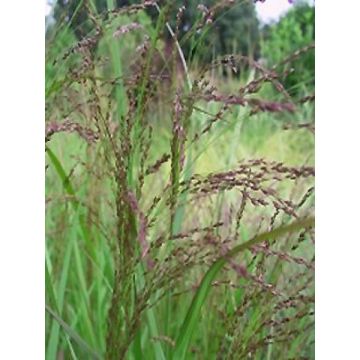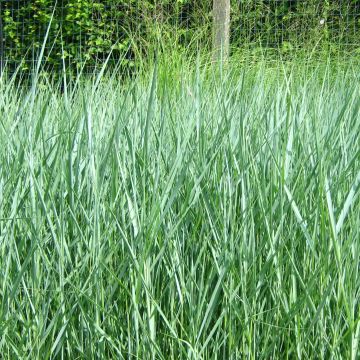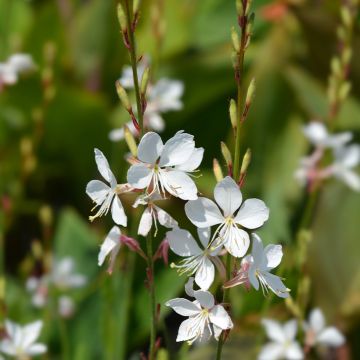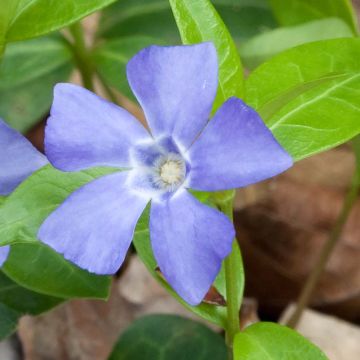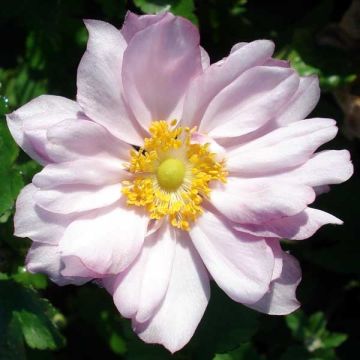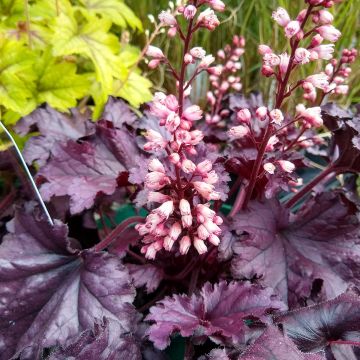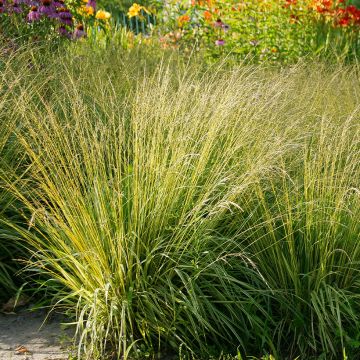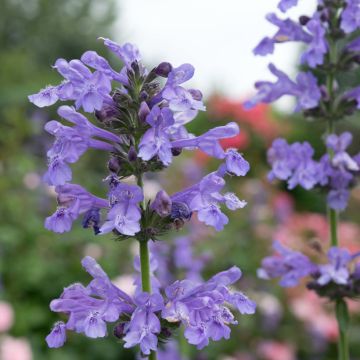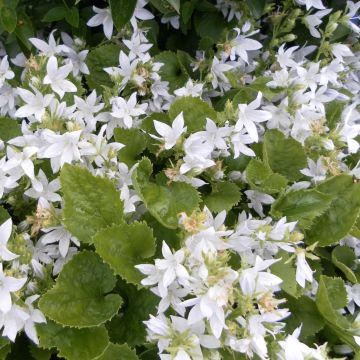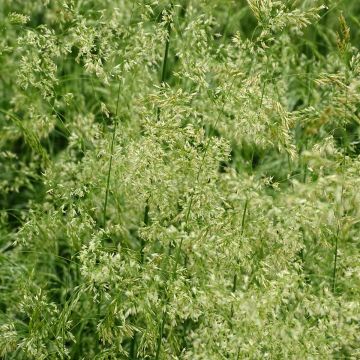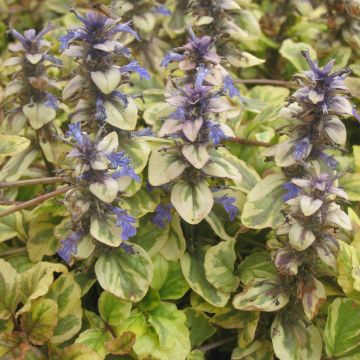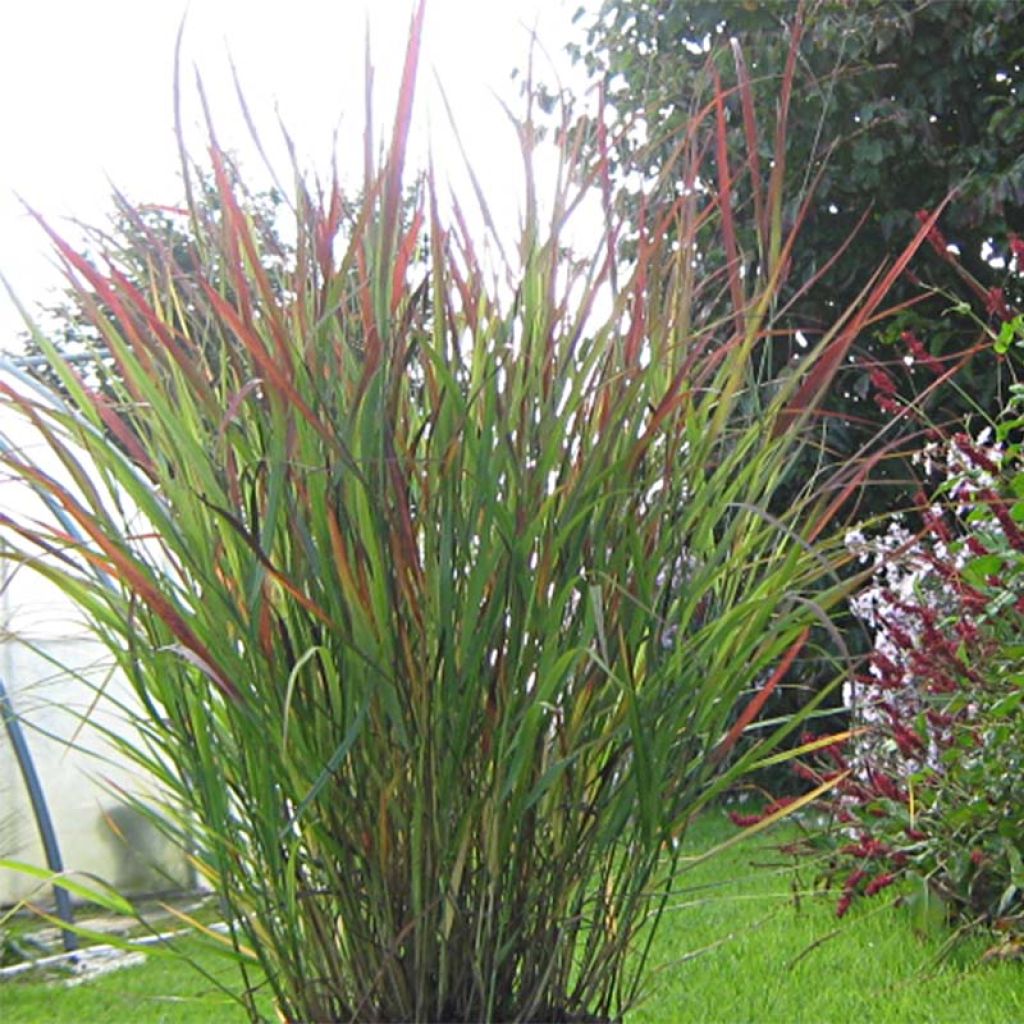

Panic érigé - Panicum virgatum Cheyenne Sky
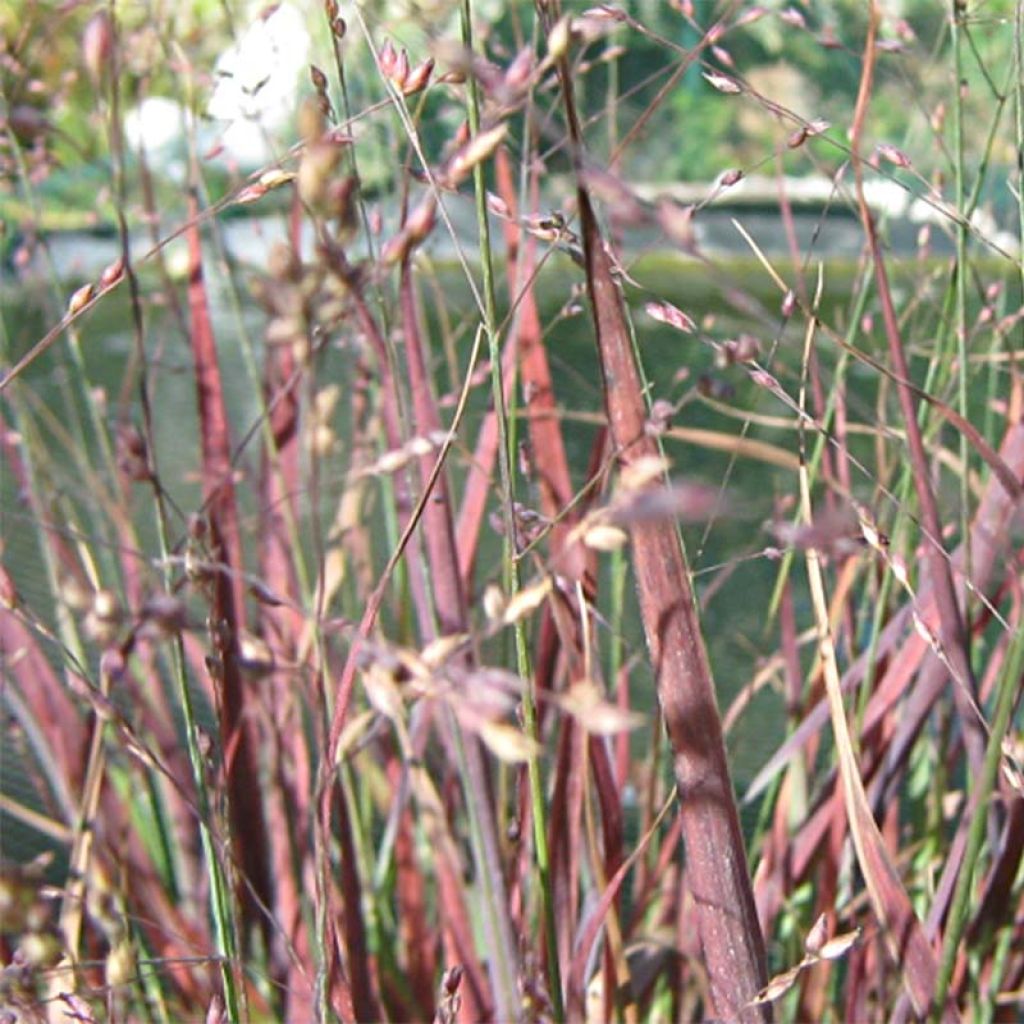

Panic érigé - Panicum virgatum Cheyenne Sky
Panicum virgatum Cheyenne Sky - Switchgrass
Panicum virgatum Cheyenne Sky
Switchgrass
This item cannot be shipped to the selected country
Delivery charge from €5.90
More information
Schedule delivery date,
and select date in basket
This plant carries a 12 months recovery warranty
More information
We guarantee the quality of our plants for a full growing cycle, and will replace at our expense any plant that fails to recover under normal climatic and planting conditions.
From €5.90 for pickup delivery and €6.90 for home delivery
Express home delivery from €8.90.
Does this plant fit my garden?
Set up your Plantfit profile →
Description
The Panicum virgatum 'Cheyenne Sky' is a new variety of upright Panic or Switchgrass that closely resembles the 'Squaw' variety but is more compact in growth and has even more colorful foliage. This medium-sized perennial grass colors its leaves a bluish-green turning to wine-red in July, and its cloud-like inflorescences are remarkably purple until autumn. Excellent in every way, this plant provides a dazzling display at the end of the season, whether in the ground or in pots, when the sun bathes its vegetation in warm tones. Panics are among the most easily grown ornamental grasses in all climates: they are perfectly hardy, very adaptable to different soil conditions, and they tolerate summer drought once established.
The Panicum virgatum is a plant in the Poaceae family that once dominated the fertile plains of the American Midwest, providing valuable forage for the huge herds of wild bison. The 'Cheyenne Sky' variety, recently introduced in the USA, is a slightly smaller and intensely colored form of this non-spreading rhizomatous plant. This grass develops fairly quickly into a large upright clump composed of long ribbon-like leaves, marked by a stiffer central vein that allows the foliage to maintain a slightly arching habit while preventing it from bending in the rain. It reaches a mature height of around 80-85 cm (32-34in) and a similar width. The foliage is bluish-green until summer. With the arrival of heat, it gradually turns dark red, purple, and coppery orange. The coloration is even more intense when there are significant temperature variations between day and night. Flowering occurs from August to October. Clumps of foliage emerge from long erect stems covered with 30 cm (12in) long plumes consisting of countless small flowers that turn dark purple when ripe, giving the inflorescence a feathery appearance.
European millet is mainly composed of annual species. Perennial species such as Panicum virgatum come from America. Adapted to extreme conditions, Panicum 'Cheyenne Sky' can withstand anything: drought, cold, waterlogged soils. It is versatile and adapts to many situations in the garden. Non-suckering, this medium-sized grass is highly appreciated in slightly wild borders and works wonders in containers on the terrace. It can be paired with tall wild asters like Aster laevis, Aster turbinellus, Aster 'Ashvi', or Monte Casino, or even with Helianthus salicifolius and Verbena bonariensis. It also tolerates coastal conditions and salt spray.
Its deep root system helps to improve soil structure, protecting it in winter and enriching it with organic matter. This characteristic is used on a large scale because it allows other plants or crops to grow in difficult soils where it would not have been possible before.
Report an error about the product description
Panicum virgatum Cheyenne Sky - Switchgrass in pictures
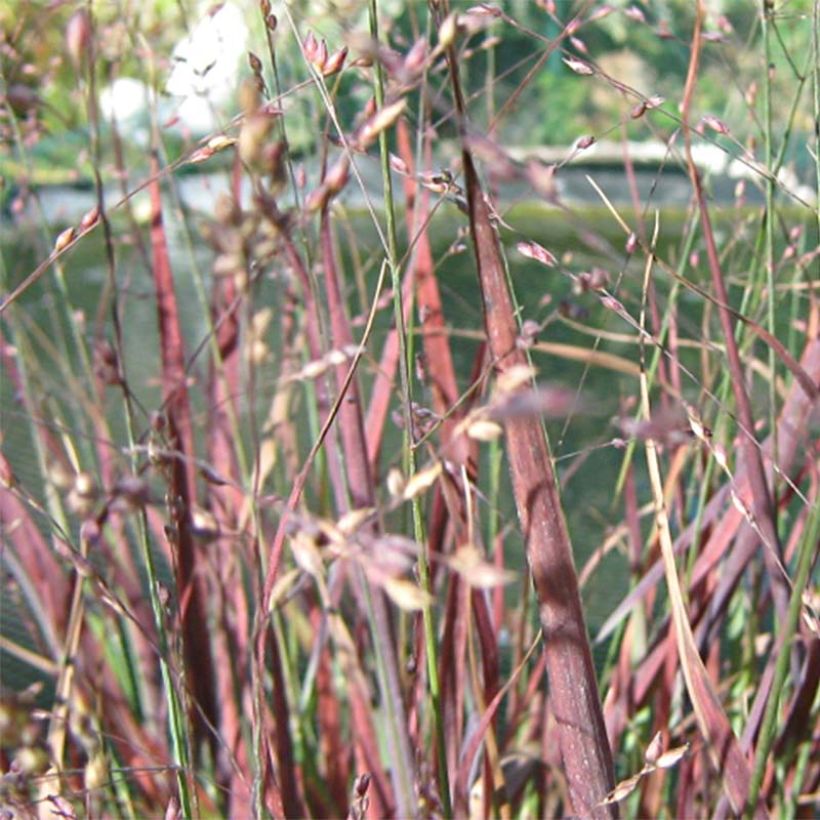

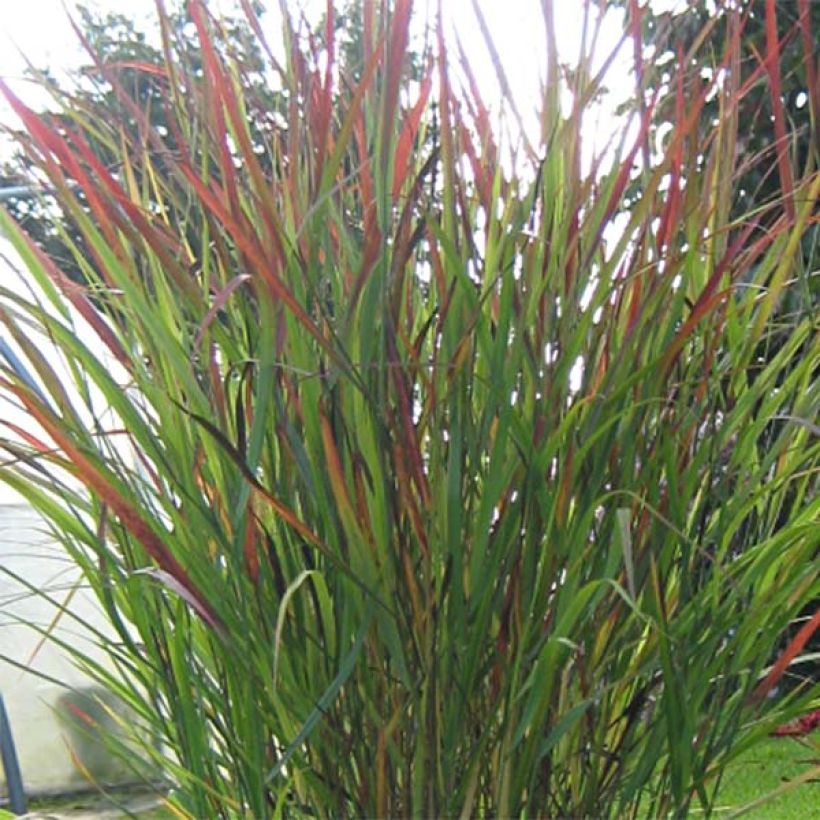

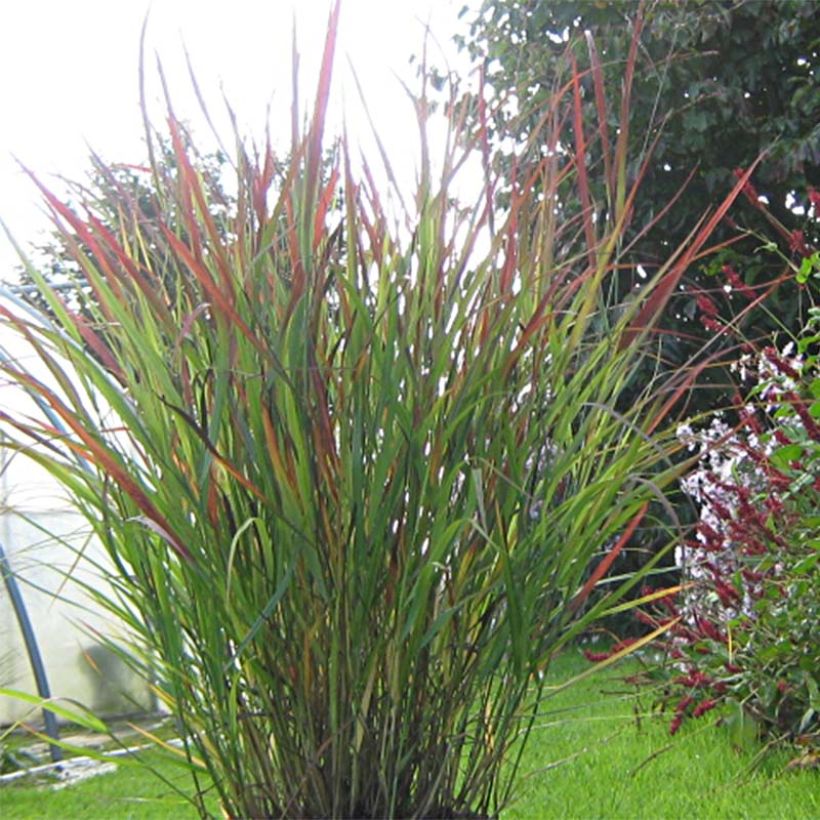

Flowering
Foliage
Plant habit
Botanical data
Panicum
virgatum
Cheyenne Sky
Poaceae
Switchgrass
Cultivar or hybrid
Other Panicum
Planting and care
Grass plant very resistant to cold and able to grow in many conditions, although it prefers deep and rich soils, even clay or limestone. However, a very sunny exposure is required.
Plant Panicum virgatum in rather fertile, deep, dry to moist, even humid in summer, and in full sun. The plant appreciates a good fertilizer 2 to 3 times a year, before the start of vegetation and during summer. Prune the clumps in April, at the start of new growth.
In dry and less fertile soil, Panicum virgatum Cheyenne Sky will show slower growth, especially in the first few years, and slightly less spectacular development. The drought resistance is proven once the plant has been able to sink its roots deep enough into the soil. It is therefore important to monitor watering during dry periods for 2 or 3 years.
This plant has no enemies in the garden.
Planting period
Intended location
Care
-
, onOrder confirmed
Reply from on Promesse de fleurs
Foolproof perennials
Haven't found what you were looking for?
Hardiness is the lowest winter temperature a plant can endure without suffering serious damage or even dying. However, hardiness is affected by location (a sheltered area, such as a patio), protection (winter cover) and soil type (hardiness is improved by well-drained soil).

Photo Sharing Terms & Conditions
In order to encourage gardeners to interact and share their experiences, Promesse de fleurs offers various media enabling content to be uploaded onto its Site - in particular via the ‘Photo sharing’ module.
The User agrees to refrain from:
- Posting any content that is illegal, prejudicial, insulting, racist, inciteful to hatred, revisionist, contrary to public decency, that infringes on privacy or on the privacy rights of third parties, in particular the publicity rights of persons and goods, intellectual property rights, or the right to privacy.
- Submitting content on behalf of a third party;
- Impersonate the identity of a third party and/or publish any personal information about a third party;
In general, the User undertakes to refrain from any unethical behaviour.
All Content (in particular text, comments, files, images, photos, videos, creative works, etc.), which may be subject to property or intellectual property rights, image or other private rights, shall remain the property of the User, subject to the limited rights granted by the terms of the licence granted by Promesse de fleurs as stated below. Users are at liberty to publish or not to publish such Content on the Site, notably via the ‘Photo Sharing’ facility, and accept that this Content shall be made public and freely accessible, notably on the Internet.
Users further acknowledge, undertake to have ,and guarantee that they hold all necessary rights and permissions to publish such material on the Site, in particular with regard to the legislation in force pertaining to any privacy, property, intellectual property, image, or contractual rights, or rights of any other nature. By publishing such Content on the Site, Users acknowledge accepting full liability as publishers of the Content within the meaning of the law, and grant Promesse de fleurs, free of charge, an inclusive, worldwide licence for the said Content for the entire duration of its publication, including all reproduction, representation, up/downloading, displaying, performing, transmission, and storage rights.
Users also grant permission for their name to be linked to the Content and accept that this link may not always be made available.
By engaging in posting material, Users consent to their Content becoming automatically accessible on the Internet, in particular on other sites and/or blogs and/or web pages of the Promesse de fleurs site, including in particular social pages and the Promesse de fleurs catalogue.
Users may secure the removal of entrusted content free of charge by issuing a simple request via our contact form.
The flowering period indicated on our website applies to countries and regions located in USDA zone 8 (France, the United Kingdom, Ireland, the Netherlands, etc.)
It will vary according to where you live:
- In zones 9 to 10 (Italy, Spain, Greece, etc.), flowering will occur about 2 to 4 weeks earlier.
- In zones 6 to 7 (Germany, Poland, Slovenia, and lower mountainous regions), flowering will be delayed by 2 to 3 weeks.
- In zone 5 (Central Europe, Scandinavia), blooming will be delayed by 3 to 5 weeks.
In temperate climates, pruning of spring-flowering shrubs (forsythia, spireas, etc.) should be done just after flowering.
Pruning of summer-flowering shrubs (Indian Lilac, Perovskia, etc.) can be done in winter or spring.
In cold regions as well as with frost-sensitive plants, avoid pruning too early when severe frosts may still occur.
The planting period indicated on our website applies to countries and regions located in USDA zone 8 (France, United Kingdom, Ireland, Netherlands).
It will vary according to where you live:
- In Mediterranean zones (Marseille, Madrid, Milan, etc.), autumn and winter are the best planting periods.
- In continental zones (Strasbourg, Munich, Vienna, etc.), delay planting by 2 to 3 weeks in spring and bring it forward by 2 to 4 weeks in autumn.
- In mountainous regions (the Alps, Pyrenees, Carpathians, etc.), it is best to plant in late spring (May-June) or late summer (August-September).
The harvesting period indicated on our website applies to countries and regions in USDA zone 8 (France, England, Ireland, the Netherlands).
In colder areas (Scandinavia, Poland, Austria...) fruit and vegetable harvests are likely to be delayed by 3-4 weeks.
In warmer areas (Italy, Spain, Greece, etc.), harvesting will probably take place earlier, depending on weather conditions.
The sowing periods indicated on our website apply to countries and regions within USDA Zone 8 (France, UK, Ireland, Netherlands).
In colder areas (Scandinavia, Poland, Austria...), delay any outdoor sowing by 3-4 weeks, or sow under glass.
In warmer climes (Italy, Spain, Greece, etc.), bring outdoor sowing forward by a few weeks.

































